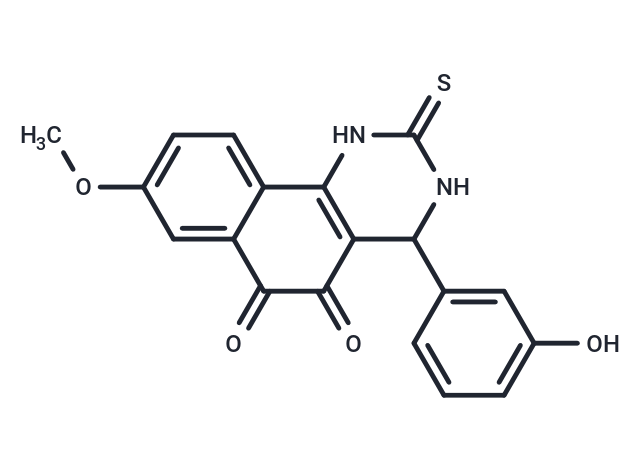Shopping Cart
- Remove All
 Your shopping cart is currently empty
Your shopping cart is currently empty

Anticancer agent 47 (compound 4j) exhibits potent anticancer properties, demonstrating antiproliferative activities, inducing apoptosis, and causing cell cycle arrest at the G0/G1 phase. Moreover, Anticancer agent 47 has shown significant in vivo antitumor activities [1].

| Pack Size | Price | Availability | Quantity |
|---|---|---|---|
| 25 mg | $1,520 | 6-8 weeks | |
| 50 mg | $1,980 | 6-8 weeks | |
| 100 mg | $2,500 | 6-8 weeks |
| Description | Anticancer agent 47 (compound 4j) exhibits potent anticancer properties, demonstrating antiproliferative activities, inducing apoptosis, and causing cell cycle arrest at the G0/G1 phase. Moreover, Anticancer agent 47 has shown significant in vivo antitumor activities [1]. |
| In vitro | Anticancer agent 47 (compound 4j) exhibits antiproliferative activity with IC50 values of 1.6, 0.72, and 7.07 μM for HepG2, A549, and H596 cells, respectively [1]. At concentrations of 0.8, 1.6, and 3.2 μM for 24 h, it induces apoptosis and cell cycle arrest at the G0/G1 phase [1]. At 5 μM for 5 h, it significantly increases ROS production [1]. Apoptosis analysis for HepG2 and H596 cells at 0.8, 1.6, and 3.2 μM for 24 h resulted in apoptotic cell rates of 14.23%, 20.47%, and 27.66%, respectively. Cell cycle analysis for HepG2 cells revealed 48.54%, 49.60%, and 53.00% of cells at G0/G1 phase at 0.6, 1.2, and 2.4 μM, respectively [1]. |
| In vivo | Anticancer agent 47, administered intravenously at a dosage of 20 mg/kg every other day for 19 days, demonstrates significant antitumor activities in BALB/c nude mice bearing HepG2 xenografts. This regimen effectively inhibited tumor growth, achieving a tumor inhibition rate of 58.7%. |
| Molecular Weight | 366.39 |
| Formula | C19H14N2O4S |
| Cas No. | 2461795-23-1 |
| Storage | Shipping with blue ice. |

Copyright © 2015-2025 TargetMol Chemicals Inc. All Rights Reserved.